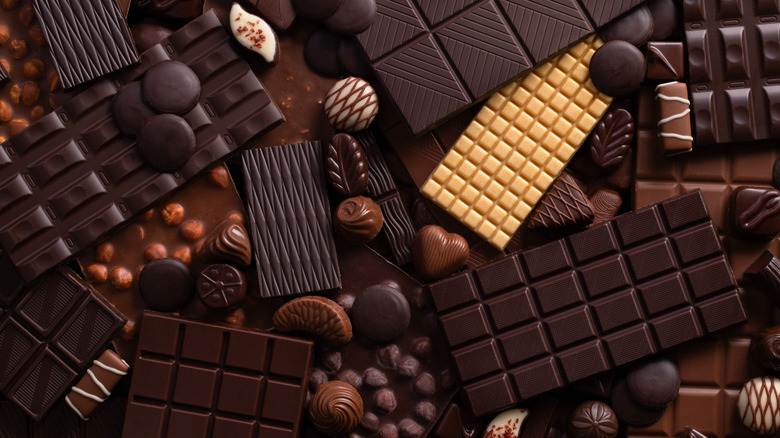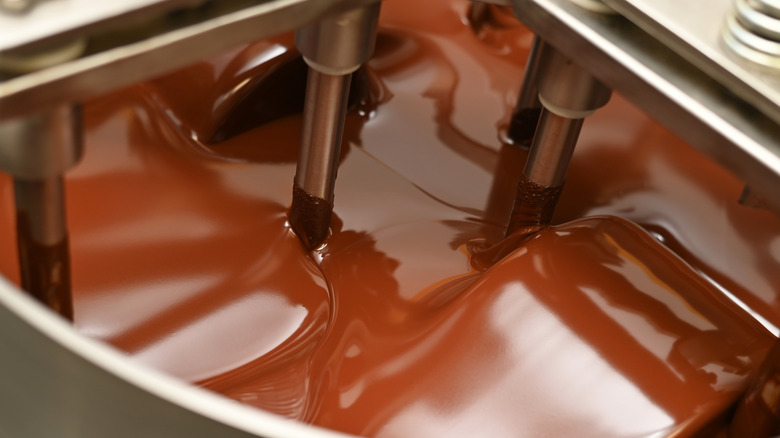Why Belgian Chocolate Is Some Of The Best In The World
Nothing is better than chocolate, but not all chocolate is created equal. Some varieties are chalky and bland, while others are melt-in-your-mouth delicacies with robust flavors and that perfect snap. Belgian chocolate falls in the latter camp, with the country making some of the best in the world. We spoke with Ed McCormick, food scientist, entrepreneur, and owner of Cape Crystal Brands about why. "Centuries of tradition have trained Belgian chocolatiers as masters of roasting and conching chocolate into its smooth melt," McCormick explains. "This is exactly why, combined with its stringent quality requirements, Belgium has been awarded by some as having the world's best chocolate."
In terms of method, the last step in the chocolate-making process is conching, which transforms cocoa paste into the silky smooth craft chocolate we know today. Where mass market companies might conch the chocolate for hours, high-quality chocolatiers, like Belgians, conch the chocolate for days. This time difference is crucial for improving texture and enhancing taste.
Belgium is truly "Chocolate Country." As The New York Times revealed, "The domestic market alone is formidable; Belgium has one of the world's highest chocolate consumption rates, at an average of more than 15 pounds per person per year." Not only that, there are chocolatiers on basically every corner; and craft chocolate isn't so much a rare indulgence as it is a daily treat. "This culture pushes chocolatiers to uphold high standards, and it is why innovation and quality continue to be so prevalent in Belgium," says McCormick.
Belgian chocolate's cocoa butter standard
The finest dark chocolate requires just cocoa butter, cacao (roasted beans from the remarkable cacao fruit), and sugar. Today, however, some large-scale chocolate companies use vegetable fats or fillers to supplement cocoa butter, leading to a distorted flavor and different texture. But Belgium will never go the way of the alternative fat. In 1894, the country established the world's first chocolate decree, requiring chocolate to contain 35% pure cocoa solids. And, in 2000, when the European Union gave the European Cocoa and Chocolate Directive, stating chocolate could contain up to 5% vegetable fats, Belgium and France fought back. Belgium launched the international trademark and label Ambao, granting chocolatiers worldwide the opportunity to align their own chocolate production with country's government-defined quality standards: no GMOs, no fats other than the milk fat found in chocolate, and no synthetic flavors.
"Cocoa butter is what gives chocolate snap, shine, and a lush melt — and keeping it pure is one of the chief reasons Belgian chocolate tastes so indulgent and feels so indulgent to eat compared to brands that use cheaper fat blends," Ed McCormick says. The trick to tell if chocolate is high quality is listening for a snap when you break off a piece — which you'll hear from Belgian chocolate, every time.
If you want to enjoy Belgian chocolate at home (Of course, there's a right way to eat craft chocolate), look out for brands like Godiva, Leonidas, Neuhaus, and Pierre Marcolini. As McCormick puts it, "Each brand showcases a different facet of Belgium's chocolate identity, whether heritage or innovation."

